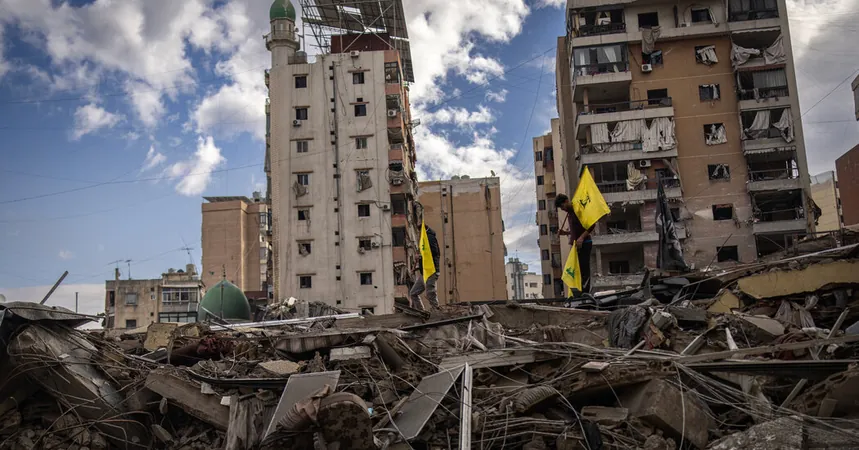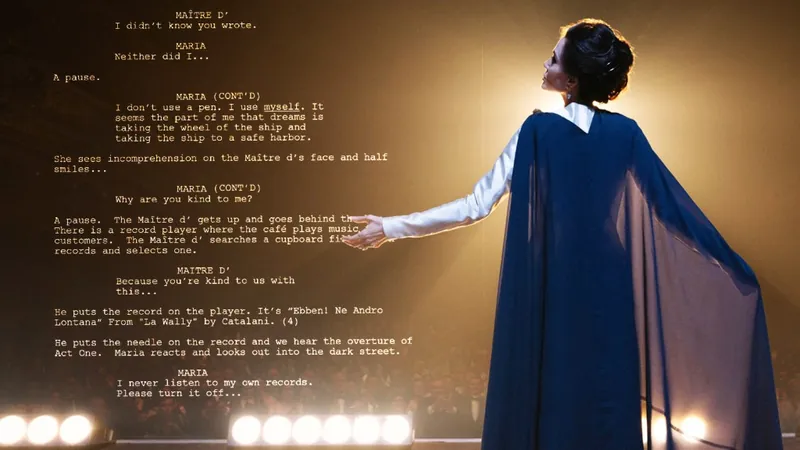
The Israel-Hezbollah Cease-Fire: What You Need to Know About This Critical Agreement
2024-11-27
Author: Yan
A cease-fire, intended to halt the most devastating conflict between Israel and Hezbollah in decades, officially commenced early Wednesday. This announcement came quickly on the heels of President Biden's deal proclamation and subsequent approval from Israeli authorities on Tuesday night.
In the wake of this development, thousands of Lebanese citizens have begun returning to their homes. The ongoing fighting has tragically claimed the lives of thousands in Lebanon and around 100 in Israel, including both civilians and military personnel. Additionally, the conflict has led to the displacement of approximately one million people in Lebanon, alongside extensive infrastructure damage, while around 60,000 have been affected in Israel.
The cease-fire agreement was accepted by the Lebanese government on Wednesday morning. Israeli Prime Minister Benjamin Netanyahu publicly supported the truce, emphasizing that it would enable Israel to replenish its military stockpiles while concurrently working to isolate Hamas—Hezbollah's ally currently engaged in a separate conflict in Gaza.
This agreement, facilitated by American and French diplomats, mandates a 60-day cease-fire, during which Israeli forces are expected to gradually withdraw from southern Lebanon. Conversely, Hezbollah fighters will fall back north from the Israeli boundary, with the Lebanese military deploying additional troops to the southern region.
If both parties adhere to this truce throughout the stipulated timeframe, negotiators aspire for this cease-fire to transition into a permanent resolution. However, enforcement will rest heavily on the cooperation between a U.N. peacekeeping force and the Lebanese Army, tasked with maintaining stability in the border zone, as previously envisioned in the 2006 United Nations Security Council Resolution 1701.
The responsibility for overseeing the cease-fire lies with several nations, including the United States and France, along with the involvement of the United Nations. Netanyahu has reiterated Israel's right to take military action should the Lebanese Army and U.N. peacekeepers fail to maintain a safe distance from Hezbollah forces.
Yet, the specter of the 2006 agreement's failure looms large over the current situation, raising questions about the adequacy of provisions in addressing the longstanding issues surrounding Hezbollah's control. The previous Resolution 1701 depended on the Lebanese military, which struggled to manage Hezbollah’s influence, and lacked U.N. forces authorized to confront the group directly.
Historically, both Israel and Hezbollah have accused each other of disregarding the terms established in Resolution 1701, including an agreement that Hezbollah remains north of the Litani River—an agreement that Hezbollah claims Israel violated by not withdrawing completely from Lebanon.
It is noteworthy that while this truce involves agreements between Israel, Lebanon, and the mediatory nations, Hezbollah has not officially signed the cease-fire. The U.S. designates Hezbollah as a terrorist organization, complicating direct negotiations. A prominent Lebanese lawmaker has been functioning as an intermediary with Hezbollah, but this group remains outside the formal agreement.
So, why did both parties choose to cease hostilities? The fatigue from war has become palpable on both sides, each seeking a resolution to the ongoing violence. Israel has effectively neutralized many of Hezbollah's key leaders and diminished their arsenal of rockets. Israeli officials have expressed doubts about sustaining military operations in Lebanon amid the ongoing conflict with Hamas in Gaza.
Hezbollah’s new leader, Naim Qassem, indicated in a recent video that the group might consent to a cease-fire if Israel ceased its attacks and respected Lebanon's sovereignty.
To grasp the depth of this conflict, it is critical to recognize its historical roots. Israel invaded Lebanon in 1978 and again in 1982 to target the Palestine Liberation Organization (P.L.O.), which had conducted attacks from Lebanese territory. Though the P.L.O. withdrew after the 1982 invasion, Hezbollah was established that same year, with Iranian backing, to combat Israeli forces. Israel maintained occupation in southern Lebanon from 1982 until 2000 and engaged in military action again in 2006 following aggressive actions from Hezbollah.
The most recent flare-up in violence was ignited after the brutal attacks on October 7, 2023, led by Hamas, which resulted in approximately 1,200 fatalities in Israel and precipitated an extensive battle in Gaza.
In conclusion, while the cease-fire brings a glimmer of hope after a long-standing and bloody conflict, the path towards lasting peace remains fraught with challenges. Will this truce hold, or will history repeat itself once again? Keep watching as this story unfolds.


 Brasil (PT)
Brasil (PT)
 Canada (EN)
Canada (EN)
 Chile (ES)
Chile (ES)
 España (ES)
España (ES)
 France (FR)
France (FR)
 Hong Kong (EN)
Hong Kong (EN)
 Italia (IT)
Italia (IT)
 日本 (JA)
日本 (JA)
 Magyarország (HU)
Magyarország (HU)
 Norge (NO)
Norge (NO)
 Polska (PL)
Polska (PL)
 Schweiz (DE)
Schweiz (DE)
 Singapore (EN)
Singapore (EN)
 Sverige (SV)
Sverige (SV)
 Suomi (FI)
Suomi (FI)
 Türkiye (TR)
Türkiye (TR)